#5: In the studio with Mikołaj Sobczak
A conversation on demons, finding humor in suffering, and the complicated relationship to Eastern European Heritage.
March 4, 2025. It was finally getting warm again. Mikołaj (Millennial, Polish) was going to pick me up from the building entrance. It took me a few minutes to realize that he was already waiting on the other side, my shortsighted ass didn’t recognize him. “Sorry, I really need to start wearing glasses, this happened a few times now,” I apologized as we shook hands. “Don’t worry about it,” Mikołaj insisted.
I first saw Mikołaj’s work in person at Capitain Petzel during Berlin Art Week last year. Mikołaj makes a lot of historical references, juggling mysticism, queer biographies, theology, and familiar Socialist iconography all at once. When he brings everything together in one medium, it’s still a wild mix of visuals, there’s no uniform worldbuilding. Everything comes from somewhere else, unwilling to assimilate into one language. I don’t know if there’s a medium left that he hasn’t used yet. Even though I loved the show, I was anxious to review it. I was worried that I might get it wrong, that I didn’t have the context to discuss it. Thinking back, I should have tried.
He moved to Düsseldorf recently. “I used to live in Amsterdam and Paris before. Düsseldorf is still reasonably cheap. I also have friends and my partner here. So, it was a pragmatic decision,” Mikołaj explained as we went through multiple corridors until we finally arrived at his studio. It was a rather small room. Unexpected, given that he often works with larger-scale pieces. “It’s a sublet, I have it until July,” Mikołaj said as we sat down. The sunlight expanded beautifully, gently warming up the whole space. On his Instagram, Mikołaj gave me a certain unhinged vibe. In person, he is very soft-spoken, weighing his words carefully.
We were talking for a while before I realized I forgot to record our conversation. “You’ll reconstruct it from your memory, that’s actually great!” Mikołaj said: “To me, memory is the best judge.”
This conversation was edited for clarity.
MS: Nowadays, I think it’s extremely difficult to take the proper time to let your memory forget and remember. We all need to hurry, you know? Maybe it was always like this. Maybe even Michelangelo was like, oh, fuck, I need to work fast because the Pope needs more art or whatever.
But trusting one’s memory comes short when you need to rush to get everything done. I like to rely on my memory when doing reenactments of performances. Because when we are rehearsing for a performance that already premiered some time ago, I suddenly realize that I clearly forgot some scenes or lines. Memory helps me judge the quality. If I forgot something, it means that it wasn’t as strong as I thought a year ago. This goes for art, too. Sometimes, an image I saw somewhere comes back to me, and I’d like to reference it in a painting, but I always fail. But it’s nice to fail.
JB: What do you mean, you fail?
MS: I try to recreate it from memory, and it turns out that my memory of an image is nothing like the original at all. When there’s, for example, a painting of a man and woman in profile looking at each other, the man is on the right and the woman is on the left. I try to recreate it from memory, and then I switch the man and woman. Or he would be blonde, and she’d be brunette, although it was the opposite initially. My memory twists and filters all of that. It gets distorted.
JB: Wayne Thiebaud (1920-2021, US-American) said that every form of distortion is also a kind of caricature of something. Is caricature something you relate to, or is it a different type of distortion?
MS: I sometimes even reference caricatures. I like them a lot. I remember back in Warsaw at the Art Academy, we used to have nude drawing classes. At the end of the semester, which is like the Rundgang here, every class and all the corridors were filled with nude drawings. I was showing my drawings, too, and I remember some old lady, probably some artist, I don't know who she was. She was like, Are those drawings yours? And I said, yeah, yeah, they are mine. – Okay. After the academy, you will be a caricaturist. You could be a great caricaturist. And I got offended by that comment. I felt like caricature is lower in the hierarchy of the arts. It’s just a job you do, not art. It’s a craft. Her comment stayed with me. Now I hear a little echo with your question. So… maybe.
I really like using political cartoons and drawings. I do a bit here in this painting, Sun (Magical Realism) with this map of Europe. It is not really caricature, but for me, it's caricature to paint Europe as a queen whose butt is Poland. I also collect those little humorist drawings that maybe will appear somewhere at some point, you know? And I also really like George Grosz. It's a good question you asked. You saw it better than I did because for me, it was very subconscious, but this makes total sense.
I deeply believe that in the darkest times, humor and jokes are what keep us human. I work a lot with the history of queer individuals under the Nazi regime. People who were in the concentration camps and survived the war. They were hilarious, you know? Very funny people. When you read their memoirs, they say that jokes were everywhere. It’s unbelievable how they had the strength to just joke around.
For example, some of the prisoners, especially those who were rather gender fluid or trans from our modern-day perspective, used to adjust their concentration camp uniforms to emphasize their buttocks or to enhance their silhouette so that they looked sexy. And on the labor-free days, they were going through the camp as coquettes who were trying to attract other men. It sounds hilarious, but it was done in a death factory. That's why I believe that humor and caricature are in general a way to deal with a world of suffering. Especially when your life is bound to decisions made by others.
No wonder that we turn to religion as people. Imagine living somewhere in Palestine during the Roman Empire. All your laws and the rules for what you can or can’t do depend on some guy in Rome. You never met him; you only know his profile from coins. But he’s the one who decides your fate. Sounds like God, right?
Magical thinking, like religion, becomes an answer for living in an oppressive system. I'm fascinated by the growing popularity of tarot and astrology. Everyone reads cards nowadays. Everyone knows their big three. Everyone knows where their moon, sun, mercury, and stuff are.
JB: …And everyone has crystals.
MS: And crystals, right. Going to India, doing yoga classes. The system got so fucking oppressive that we people are trying to gain control over the dystopia that is happening, maybe to keep the status quo that we think we know. The system we are living in is not late capitalism or neoliberalism anymore, it's techno-feudalism. It's like we have a lord over us, and we are the peasants. Will the lord beat us, or will he be benevolent?
Creating posts for fucking Meta for free, I think I'm posting on my Instagram to show people what I'm doing. But I'm also giving data to Meta, they can sell it, and they send me ads for new Golden acrylics. They earn, not I. Just like the peasant. I work in the field, I harvest for my lord, and that's his food. That's what he will eat or sell. Not me.
This painting, Sun (Magical Realism), that I made for the solo show in Salzburg, is very much connected to those things. You see that person’s long hair? It’s a typical Polish Plait, a Kołtun. It’s like one long, big, flat dreadlock. You can’t brush or cut it. It was worn by peasants during feudalism. The landowners and upper classes saw the Kołtun as a sign that the peasants were unhygienic: They don't brush their hair, there are fleas and other insects in it, so basically, they are seen as barbarians. Not even people, but rather animals.
But for the peasants, the Kołtun was like medicine for what we nowadays would call depression or PTSD. You could only cut the Kołtun off during a ritual performed by a whisperer, like a witch doctor: You grow the plait, you treat it kind of like a child growing from your body, and then you drink a special wine-based substance made of herbs, and then the witch doctor would cut the Kołtun. The cut hair would then be treated very gently, like a miscarriage, and it would be buried in the soil. The peasants believed that all the things that disturb you grow into the Kołtun. What we would call intrusive thoughts, stress, anxiety – you grow all of that into your hair. And once you cut it, you’re cured.
JB: Many cultures share this idea that you carry energy in your hair, right? Even today, which might not be an ideal comparison, but let’s say that there’s a breakup. What do most girls do? They get a haircut. They get rid of all the bad energy that piled up during the relationship.
MS: The Britney moment! When she cut off her hair publicly during the peak of her breakdown!
JB: Exactly!
MS: The idea of growing your sadness into your hair and cutting it really is present in so many cultures. It might be called differently all around the world, and for the Polish, it’s the Kołtun.
Back in the day, you were cured by the witch doctor. Nowadays, it’s a psychologist or psychiatrist. You say, I wake up in the night, I cannot breathe. I don't know what’s wrong. And they tell you that it’s depression, and you already feel some relief by naming this problem. Once you know what it is, you know how to fight it. The witch doctor in the past would recognize in your tangled hair a Kołtun and tell you they know what that is. That they understand you. This was basically like psychotherapy.
They might have called these symptoms demons. I will always see demons not as beings who are circulating here in this room and whisper things into my ear that make me do bad stuff. Of course, demons do exist, but not as those “fremd” beings, but as the things that are put into our subconsciousness against our will. The culture that we were raised in already put so many things into our head. You can only exorcise the demon when you know its name. If something doesn’t have a name, it doesn’t really exist, and you can’t get rid of it.
JB: It has always been the opposite to me. As long as I don’t verbalize something – say a fear or a worry – it’s only a concept in my head. It’s limited to a fixed territory. It can’t harm me. But giving it a name would give it weight and power over me. Naming something is to me like giving away control.
MS: I mean you don’t have to get rid of everything if you don’t feel the need. But if you don't want it anymore within you, you need to externalize it.
JB: Yeah... Maybe…
MS: I think it’s important to face those things. Both mentally and creatively. You know, I’m very excited whenever I am haunted by an image. Because that means that I get to give it a name by putting it into a physical form and releasing myself from it. I think making art in general is a kind of exorcism, for me at least.
JB: I noticed that you often refer to the invention of painting in your works. What fascinates you about this story?
MS: What fascinates me the most is that the origins of painting are the effect of probably the two strongest instincts we have, which are leaving an offspring and escaping death. The myth is about the nymph Butade, who fell in love with a young man with whom she had a very passionate affair. He was a warrior, however, and had to leave for war. So, in their last encounter, they were saying goodbye to each other, not knowing if he’d ever come back. And in some versions, it’s the sun, in others, it’s the moon shining on them. I was interested in this tension between the moon and the sun. In the version I know, it’s the moon. And so, the light cast a shadow of the warrior’s profile on the wall, and Butade saw it. She took a burnt stick and drew an outline of his profile on the wall to keep his image with her.
On the one hand, it’s an act of love, but more like affection and sexual desire to keep her beautiful lover in front of her eyes. And on the other hand, there’s this awareness of death and that time is passing, that he won’t live forever. Love and death are friends. And some people even say that an orgasm is a small death.
JB: Yeah, la petite mort in French.
MS: Right. And I thought that this myth of the origin of painting totally makes sense. Art calms down my primal, so basically, subconscious fear of dying. I will not be here with my body anymore, but my children, my paintings, my sculptures will live on. And then there’s this desire to possess something or someone in the form of art.
And actually, this interest came in a very dark moment of my life when I felt a lot of uncertainty. That was also in the last month or even the last half of the year when I was at the Rijksakademie. I was about to start a new life, and I would lose my previous opportunities like my studio, workshops, the scholarship, the apartment in Amsterdam – all for granted. Everyone was excited for their final graduation show, and I didn’t know what to do. Meanwhile, to recover from stress, I was compulsively having sex with strangers. And so, I was getting scared of STDs and especially HIV, which to this day has this mortal image even though it’s not as lethal anymore. And even there, there was this connection between passion and death.
Returning to this tension between the moon and the sun, I went to a lecture about hermetic principles, which is an ancient concept of principles that rule everything, basically. The lecturer said that you need two elements to create something. They are both represented by the sun and the moon. That’s why they would often appear in alchemical texts. The sun represents the male element. And the moon is the female element. He explained how art is made from an alchemical perspective: The artist is the sun who needs inspiration, which is usually represented by a muse, the moon. And the muse impregnates the artist. And this reminded me again about the myth of Butade creating the artwork, the female element creating it. And that’s also why I prefer the moon version; it’s more in line with our ancient knowledge.
JB: Earlier, you spoke about religion and spirituality as a reaction to oppression. I was wondering if you’re spiritual yourself. Your IG Stories about Gnosticism and Mysticism suggest that you are, but then this strong emphasis on religion and oppression contradicts that…
MS: Yeah, I mean, I am. I grew up with a very gnostic attitude where religion, spirituality, and knowledge are one thing. And separating them from each other is called exoteric. Like there’s esotericism and then there’s exotericism. Exotericism is something … let's say for the masses. It doesn't require any preparation; you cannot really hurt yourself. Esotericism already has this motive that you need to have some keys to understand the codes, some preparation to understand the knowledge, the information. When you don’t understand something, you might discard it as a belief system, something abstract. I treat spirituality more as a form of knowledge.
JB: You referenced magical realism when talking about this work, and there’s a lot of references to Slavic or Eastern European culture in your art. But I also see that you use a lot of socialist aesthetics, which somehow opposes queerness with its rather strict enforcement of the gender binary. And I speak about this as somebody whose parents are from the Soviet Union. I’m wondering what it’s like for you to reference an aesthetic that is so charged with the binary and at the same time refer to queerness?
MS: Well, I don’t think that the Soviet aesthetic was so obvious with the gender binary. Sometimes, the women looked pretty masculine. They were physically strong, they were doing male-dominated jobs, driving tractors and stuff. So, I think this binary was not even that strict. Of course, there was the mother figure, but this mother also worked in the factory just like the father did. I totally hear what you’re saying. There truly was a very homogenous vision of how things were supposed to be. Conservative Catholic families in pre-1989 Poland saw the role of the woman as a great mother. That was read as a gesture of opposition, being against the socialists’ authoritarianism, which was rather promoting gender equality. Very progressive socialists’ families, on the other hand, saw the role of a woman as an intellectual, or the worker and builder of a new world.
What really fascinates me, or maybe even bothers me, with the Eastern Socialist heritage is its reception and the contemporary post-Berlin Wall World. In 1989, The West came to the East and said, everything you created and achieved is shit. It was all terror. A culture of terror. Art of terror. Pure propaganda. Shit. Shit, shit. Now we are bringing you freedom, democracy, the right stuff. But it was not purely evil. It was produced during the regime, but some ideals were great. Like, the workers’ unions, the redistribution of work and wealth, and emancipation. That’s why, as an Eastern European artist living and working in the West, I kind of see it as my obligation to contribute this Eastern heritage to Western art.
It’s also exposing this fetishization of the East as ritualistic, magical, and intuitive. Meanwhile, the North and the West are always rational and pragmatic. You can see this fetishization in the new Nosferatu (2025) movie: The German city is the city of science and medicine, the place where people don’t believe in superstition. Meanwhile, south Romania is the place of “gypsies” – as literally phrased in the film –, rituals, demons, and darkness. You need to wear a cross for protection against evil spirits. And Hollywood believes they just produced the greatest Horror Film of all time. It’s fascinating that this perspective hasn’t changed at all. I’m tired of that stuff, but on the other hand, I take it for granted.
JB: What are you tired of?
MS: Being perceived as a babushka, you know? And yet, I once said to my students when I was teaching, you want babushka? I will give you babushka! And somehow it was very liberating for my artistic development. Like, why should I escape my heritage? Why should I try to be a Western artist when I grew up with all those mosaics, and instead believe that capitalism is the key to saving the world? I think you can learn something from me, as well as I can learn something from you. So that's why I had no resistance to referencing this Soviet heritage.
Mikołaj Sobczak: Moon, Sun, Mercury is on view until July 13, 2025, at Salzburger Kunstverein.
Current and upcoming group shows:
Familiar Strangers, until June 29, 2025, at Bozar, Brussels
Planetary Peasants, from May 23 until September 14, 2025, at Kunstmuseum Moritzburg, Halle (Saale)
LGBT+ Zones, from May 30 until August 31, 2025, at Gallery Arsenał, Poznań
Thank you, Mikołaj, for the look behind the scenes! If you enjoyed this interview, leave me a like and make sure to follow @mickowhysobchack on Instagram.
See you soon!!!
Jennifer
The Gen Z Art Critic


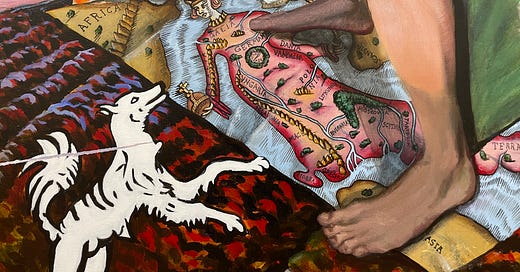


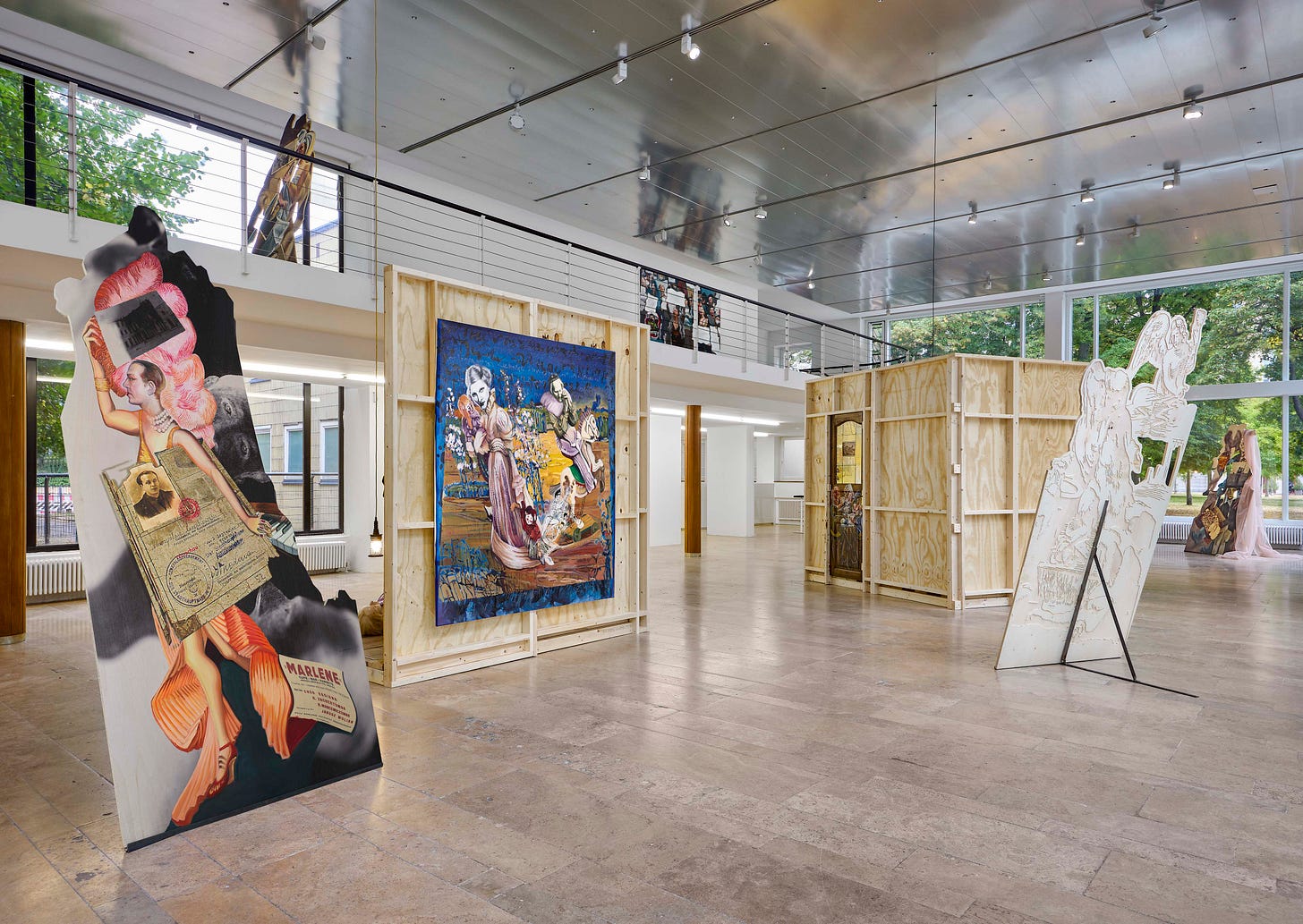
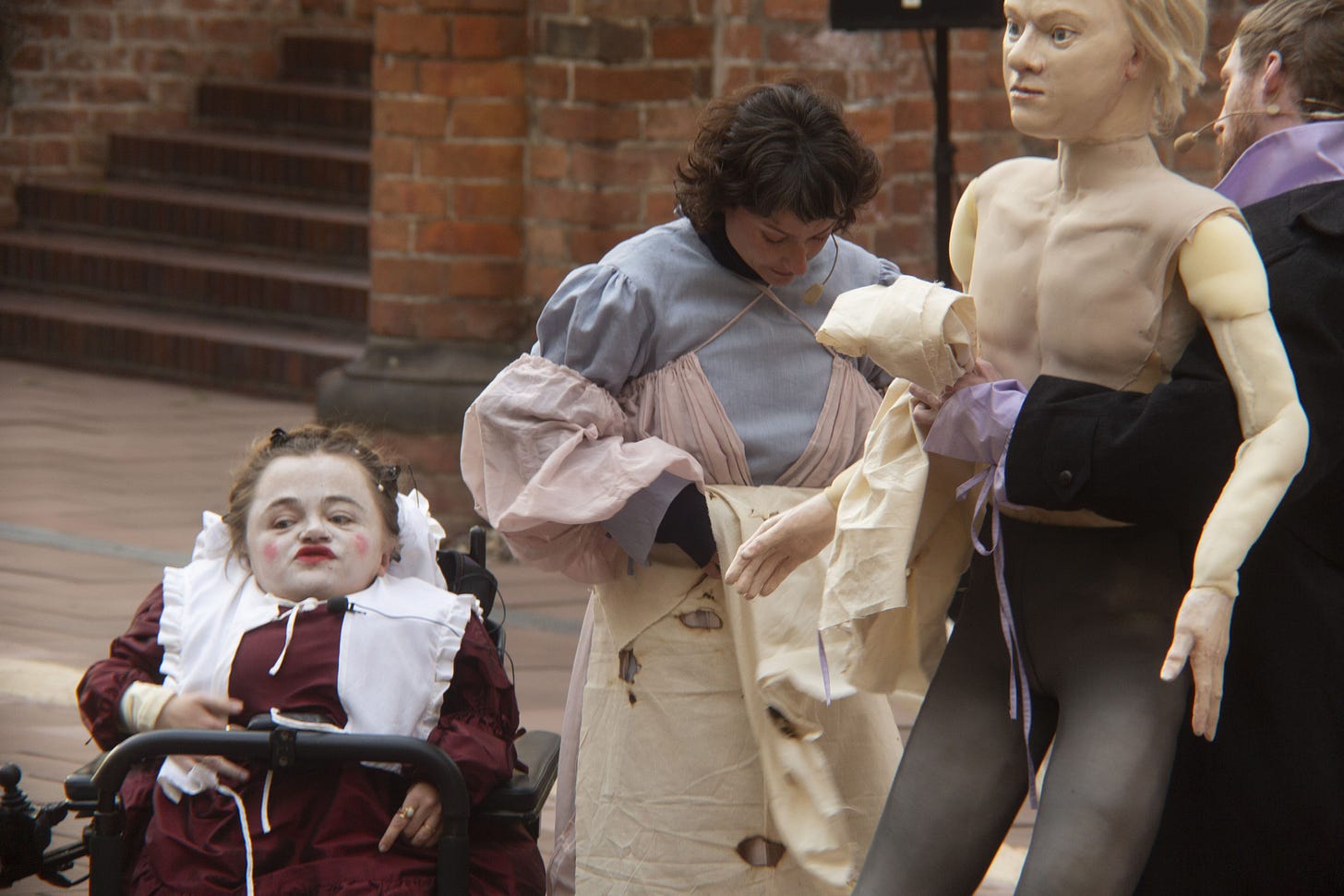

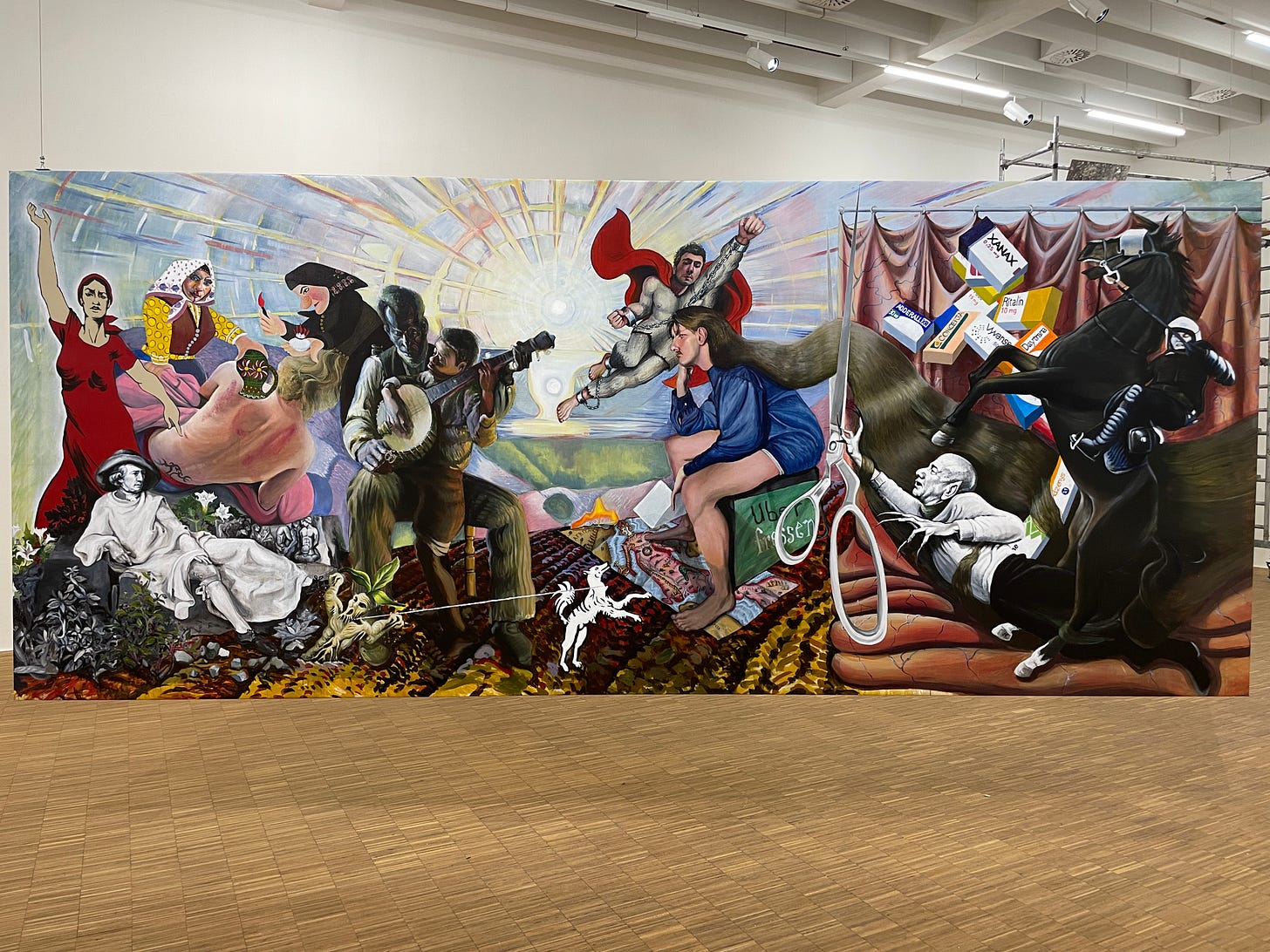
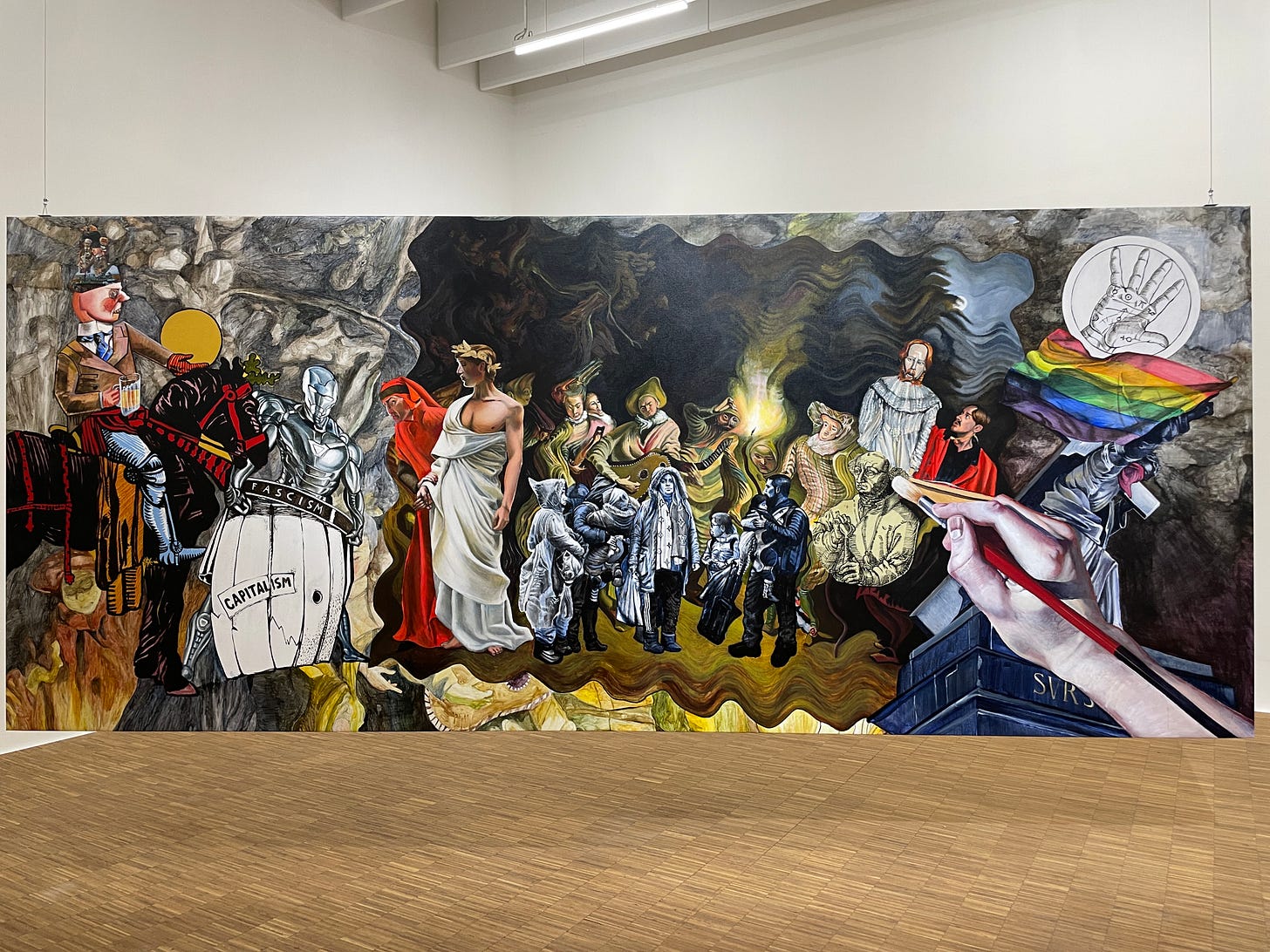
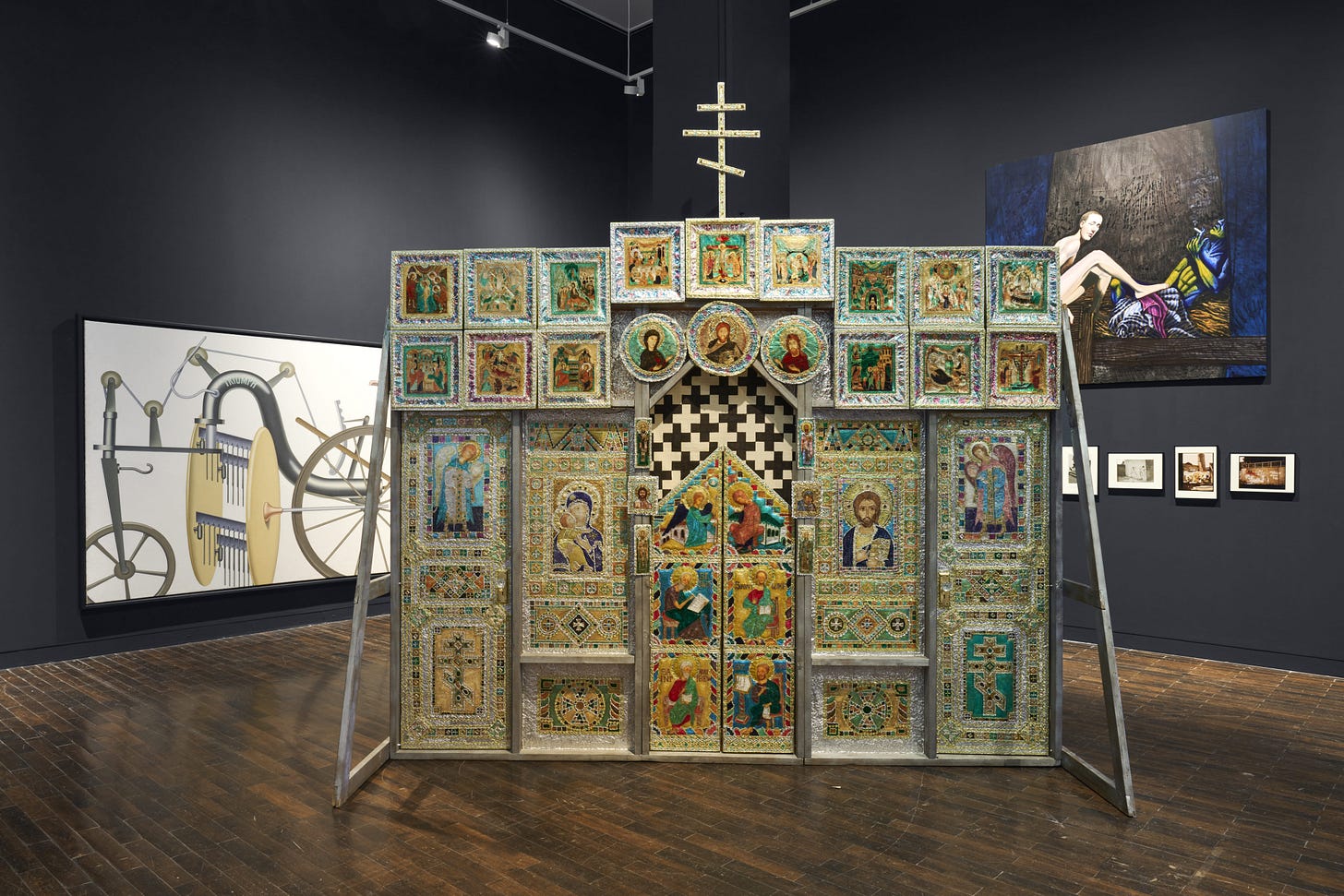
wooow! great interview with honest thoughts! thanks!